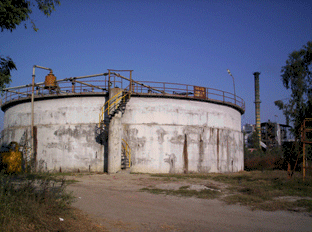

Evaporative Condensers Need to know more? Send us an email or feel free to search our online series with our give away search engine: |
Evaporative condensers basically consist of some enclosure or shell housing a given amount of galvanized steel or copper coil. Water is doused all over the coil banks by nozzles. A fraction of the liquid evaporates removing latent heat released by refrigerant condensation. The remaining liquid flow keeps trickling down and is finally collected in some sort of bottom basin or sump and recirculated back to the top of the coil banks for another round In properly designed evaporative condensers, the small fraction that evaporates during this brief passage is enough to achieve condensation targets. There is also a small sensible heat loss due to the temperature difference between incoming hot gas and air.
Evaporative condensers can be further classified as either induced or forced draft units. Induced draft units induce a negative pressure or vacuum right below the fan and pull in air from frequently louvered window sides. In forced draft units one or more fans are located at the air inlet as determined and essentially blow through required airflow. Forced draft condensers are usually made available with centrifugal as well as axial fan model configurations.
Induced draft designs insure an even, smooth air distribution over the unit's cross-section and if properly designed, e.g. larger diameter fans, can significantly lower required fan HP for a given thermal context. Forced-draft units risk significant thermal de-rating due to recirculation. In order to avoid this, some unfortunate forced-draft designs operate at the upper "thru tube" velocities, say 675 - 700 fpm only to find themselves requiring twice or thrice fan HP to load duty comparable, more engineered induced draft units specifically designed to operate at much lower "thru tube" velocity and selecting larger fan diameters. Centrifugal fan units characteristically require twice as much power as the same thermal capacity axial fan models